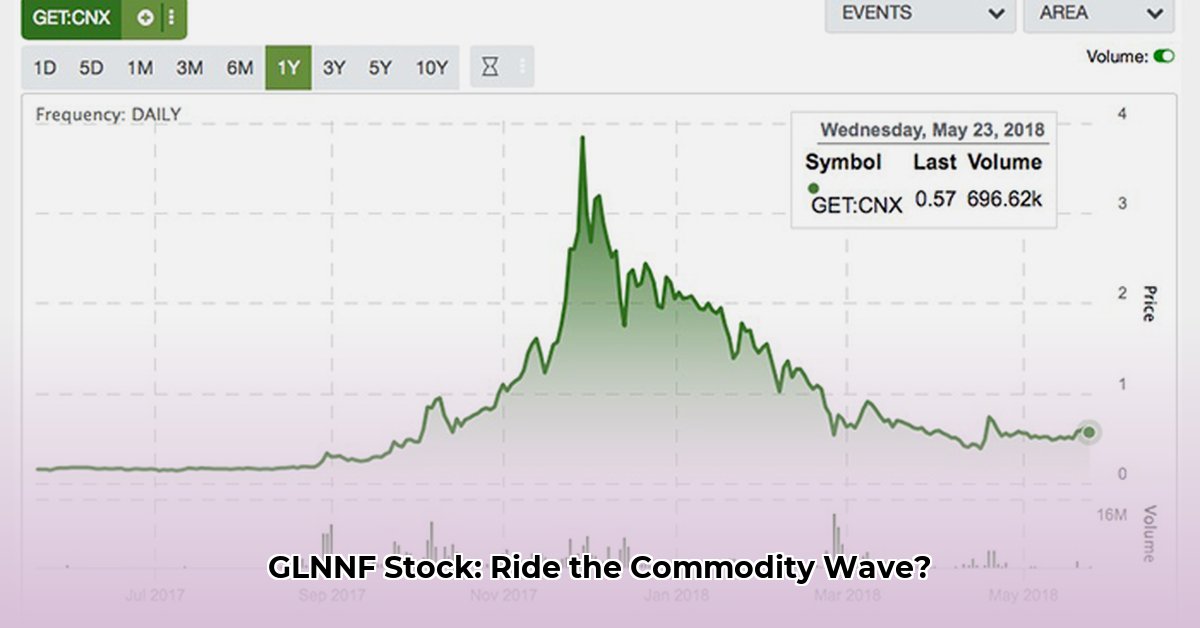
Understanding Glencore's Position in the Commodities Market
Glencore plc (GLNNF) operates as a global leader in commodities trading, encompassing a diverse portfolio of metals, minerals, and energy resources. Its vast network and established trading expertise create significant opportunities for profit, but also introduce substantial risks inherent to the volatile nature of the commodities market. This report provides an integrated analysis of Glencore's current state, identifying key strengths, weaknesses, and outlining strategic approaches for investors and stakeholders.
Navigating the Volatility: A Deep Dive into GLNNF's Challenges and Opportunities
The commodities market is characterized by significant price fluctuations, driven by global supply and demand dynamics, economic growth, and geopolitical events. Glencore's success hinges on its ability to predict and adapt to these fluctuations. For instance, a surge in global demand for copper could significantly benefit Glencore, while a global recession might drastically reduce demand, impacting profitability. This inherent volatility presents both a significant challenge and a profound opportunity for astute investors. How effectively does GLNNF manage this inherent risk? Data analysis, incorporating historical price movements and future forecasts, is crucial for understanding Glencore's ability to navigate these market shifts. (Analysis requires supplementary quantitative data on price volatility and Glencore's trading performance.)
Geopolitical Risks and Their Impact on Glencore's Operations
Geopolitical instability significantly influences commodity markets. Conflicts, sanctions, political instability within resource-producing regions can disrupt supply chains and cause price volatility. Given Glencore’s global operations, it is uniquely susceptible to such disruptions. For example, a conflict in a major copper-producing nation could trigger dramatic market changes, impacting both Glencore's earnings and investor confidence. What strategies does Glencore employ to mitigate these geopolitical risks? Analysis requires a detailed examination of their risk management strategies and historical performance during periods of political upheaval. (Further research needed on specific examples of Glencore’s successful adaptation to geopolitical events.)
The Growing Importance of ESG Factors in the Commodities Sector
Environmental, Social, and Governance (ESG) concerns are gaining prominence among investors, pushing companies like Glencore to prioritize sustainable and ethical practices. While this trend presents challenges regarding operational adjustments and increased scrutiny, it also presents opportunities. Companies demonstrating strong ESG performance often attract increased investment and benefit from enhanced reputation. Therefore, assessing Glencore’s commitment to ESG initiatives and their impact on investor perception is crucial. (Quantitative data on Glencore’s ESG performance – such as carbon emissions reduction targets, diversity initiatives, and ethical sourcing practices – is necessary for a comprehensive evaluation.)
Key Strategies for Short-Term and Long-Term Success
Glencore's success necessitates both short-term reactive strategies and long-term proactive planning.
Short-Term Strategies (0-1 Year)
- Optimized Trading: Refining trading algorithms and strategies using real-time data analytics to mitigate losses during market downturns.
- Cost Efficiency: Implementing rigorous cost-reduction measures to enhance profitability during periods of low commodity prices.
- Supply Chain Resilience: Investing in robust and diversified supply chains to minimize disruptions from geopolitical events or natural disasters.
Long-Term Strategies (3-5 Years)
- Sustainable Investments: Significant investments in environmentally friendly technologies and practices to address ESG concerns and ensure long-term sustainability.
- Market Diversification: Expanding into less volatile sectors, such as renewable energy or strategic metals, to mitigate overall risk.
- Technological Advancement: Utilizing advanced technologies, such as AI-driven predictive models and blockchain for supply chain transparency, to improve forecasting accuracy and operational efficiency.
Stakeholder Perspectives and Concerns
Different stakeholders hold varying concerns regarding Glencore’s performance and future prospects.
| Stakeholder | Key Concerns |
|---|---|
| Glencore Management | Profitability, risk management, regulatory compliance, sustainable growth |
| Investors | Returns, risk assessment, ESG performance, transparency, and long-term stability |
| Governments & Regulators | Market stability and responsible business practices, environmental impact |
| Communities | Environmental impact, job creation, and responsible community engagement |
Risk Assessment Matrix
Glencore faces a spectrum of risks, each categorized by likelihood and impact. (Data required to populate this matrix with numerical values for likelihood and impact.)
| Risk Category | Likelihood | Impact | Mitigation Strategies |
|---|---|---|---|
| Price Volatility | Hedging, diversification, advanced market forecasting | ||
| Geopolitical Risks | Diversified supply chains, flexible operational models | ||
| Regulatory Changes | Proactive compliance, adapting to changes | ||
| Technological Disruption | R&D investments, strategic partnerships | ||
| ESG Concerns | Sustainable practices, transparency, stakeholder engagement |
Regulatory Implications and Compliance
The commodities trading industry is heavily regulated, requiring Glencore to maintain strict compliance. Failure to comply can result in significant penalties, reputational damage, and legal challenges. A thorough understanding of the ever-evolving regulatory landscape is crucial for Glencore’s continued success. (Requires detailed analysis of relevant regulations and their impact on Glencore’s operations.)
Conclusion: A Cautious but Potentially Rewarding Investment
Investing in Glencore presents a high-risk, high-reward scenario. Successful investment hinges on a thorough understanding of the complexities of the commodities market and Glencore’s ability to navigate challenges and capitalize on opportunities. Continuous monitoring of the market, Glencore’s performance, and evolving regulatory landscapes is paramount for informed decision-making. Furthermore, the incorporation of comprehensive financial data and detailed analysis will significantly enhance the accuracy and reliability of this investment assessment.